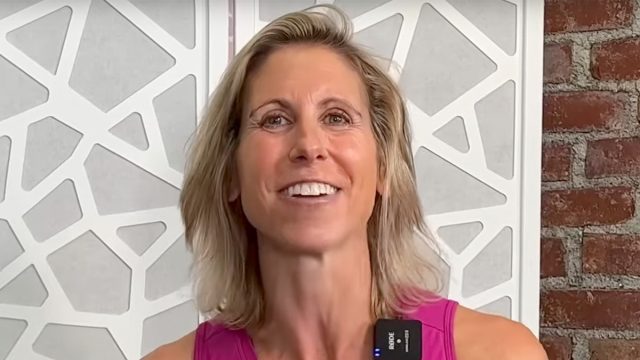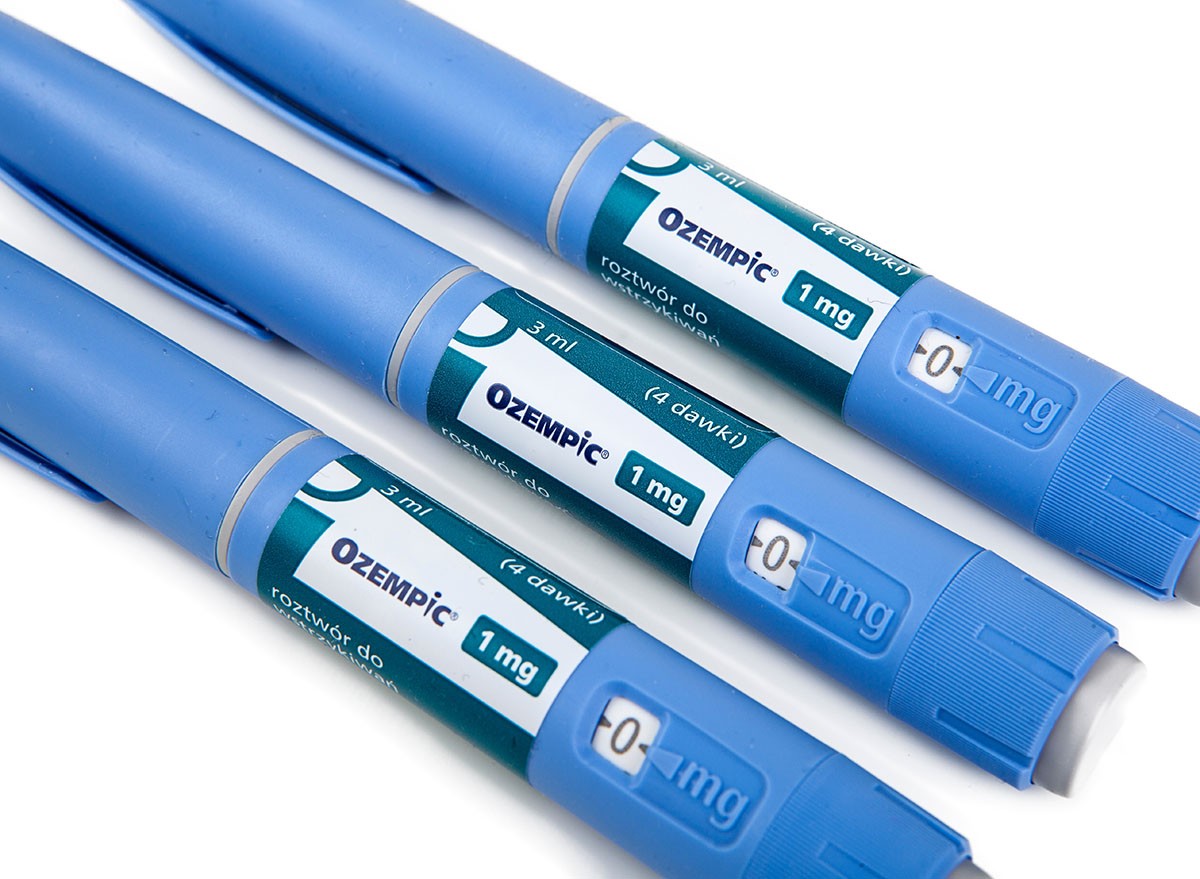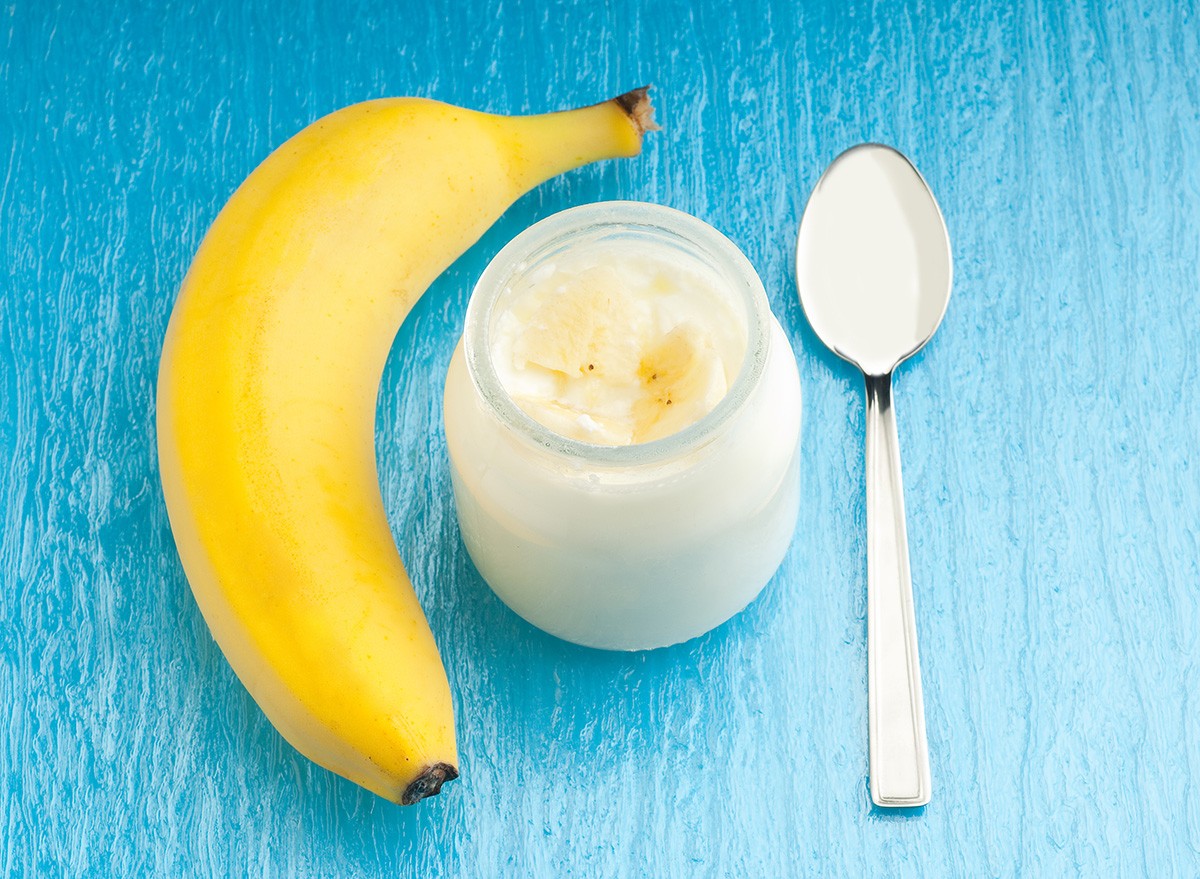These 2 Steps Preserve Muscles While Using Ozempic, Says Physical Therapist

Many of us are looking for effective ways to lose weight, and GLP-1 medications have become increasingly popular options. But what happens to our muscles and bones in the process? As a physical therapist, nutritionist, and certified strength and conditioning specialist, Dr. Kristie Ennis, As a nutritionist, certified strength and conditioning specialist, and physical therapist, is passionate about helping people protect their body while achieving their weight loss goals. Read on to discover how you can maintain your strength and bone density even while using GLP-1 medications.
RELATED: 15 Things to Know Before Requesting Ozempic for Weight Loss
What Are GLP-1 Medications?
"GLP-1, or glucagon peptide one, is an intestinal hormone that's secreted after eating to increase insulin secretion, which helps to keep our blood sugars normal," Dr. Ennis explains in her post. These medications were initially developed to help with diabetes management, but their weight loss effects have made them increasingly popular for that purpose as well.
How GLP-1s Promote Weight Loss

Dr. Ennis describes how these medications work: "They activate the GLP-1 receptors in the brain. This helps to regulate the brain's hunger signal, and it actually helps to make the stomach empty slower than it normally would." The result is feeling satisfied with fewer calories, which naturally leads to weight loss.
The Hidden Cost: Muscle and Bone Loss

While the weight loss effects can be impressive, there's a concerning downside. "Instead of burning all fat like we would absolutely love to do, our body has no idea that we're trying to lose weight," Dr. Ennis points out. "It starts to take some of those protein molecules away from the muscle."
The consequences can be significant. "Studies have shown that with this, you actually can lose between 20 to 50% of your lean body mass, which is huge," warns Dr. Ennis. "That not only includes muscle, that includes bone too."
RELATED: 20 Possible Ozempic Side Effects
Solution #1: Increase Protein Intake

Fortunately, there are effective strategies to protect your muscles and bones. "The current theory shows that weight loss is occurring because we're eating less," says Dr. Ennis. "Research from dieting shows that increasing your protein intake without doing anything else actually spared muscle loss significantly."
Dr. Ennis recommends approximately 2.3 grams of protein per kilogram of body weight, or roughly 35% of your total caloric intake. She suggests various protein sources: "One of my favorites is actually Greek yogurt. I love to make a smoothie with some Greek yogurt, spinach, carrots, frozen berries, banana, and throw some peanut butter in there too."
Solution #2: Strength Training

For maximum protection of muscle and bone, Dr. Ennis advises combining increased protein with regular strength training. "You want to make sure you actually work on all of the muscle groups," she emphasizes. "Things like squats, lunges, rows, chest presses" are all beneficial.
The recommended frequency is "two to three days a week on non-consecutive days," according to Dr. Ennis. "You never want to strength train the same body part two days in a row, or you will be sore."
Dr. Ennis clarifies that strength training can be done "with weights, with bands, with body weight." The key is to work until fatigue, which she defines as feeling challenged during the last repetition of an exercise. For beginners, she suggests "lighter weights and go towards a little bit higher repetition, maybe 12 to 15."
RELATED: What Happens to Your Body When You Stop Taking Ozempic
The Winning Combination

"Increase protein, do your strength training, and you are going to be feeling and looking awesome," concludes Dr. Ennis. By following these two simple but powerful strategies, you can enjoy the weight loss benefits of GLP-1 medications while protecting your valuable muscle and bone mass.




